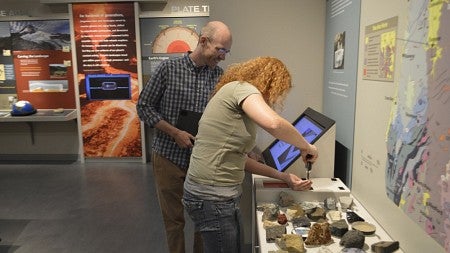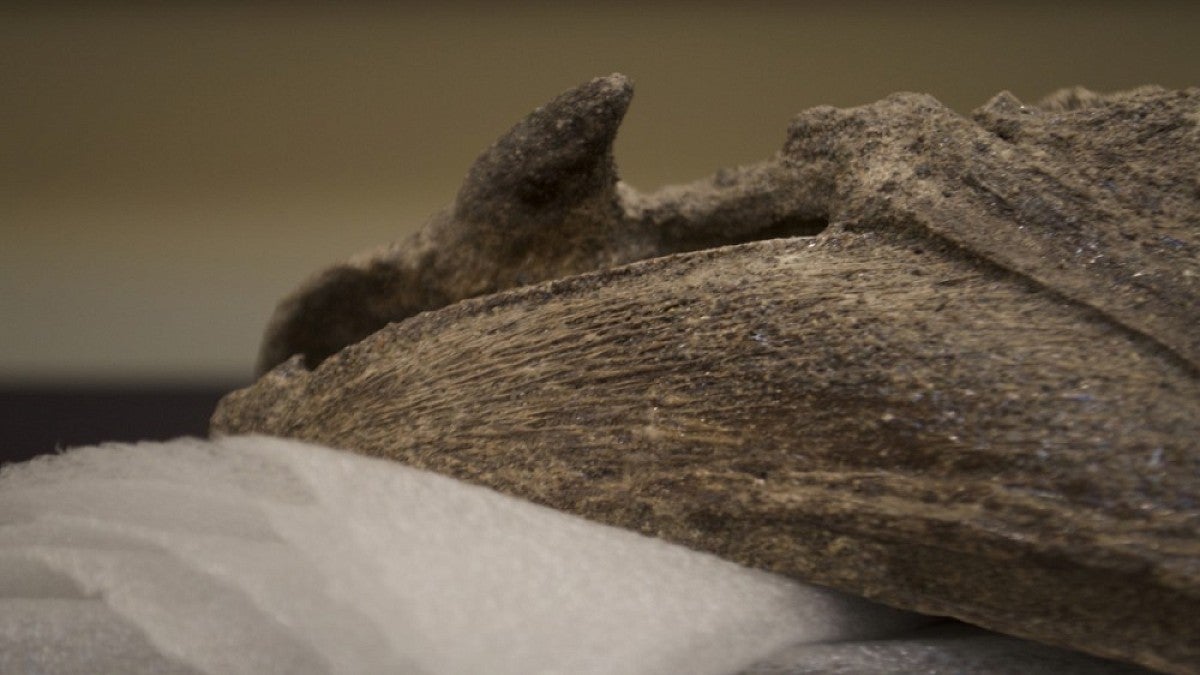If you haven’t been to the Museum of Natural and Cultural History lately, now is a great time to visit its Explore Oregon hall. The 2,755-square-foot exhibition of the state’s natural history and geology has just received fresh updates.

At one revamped display, visitors can explore the state’s geology using touchable rock samples and a new radio frequency identification, or RFID, scanner. They can also play a round or two of “The Rock Cycle Game” to explore how rocks change over the eons.
Another display offers a taste of the museum’s diverse collections through a series of videos narrated by UO scientists.
Visitors can don a pair of headphones, press a button and get behind-the-scenes glimpses into the Grand Primate Collection, the Condon Fossil Collection and the recently adopted Jensen Arctic Collection. They also can explore the creepy-crawly side of the museum’s labs, where a team of flesh-eating beetles can be seen cleaning animal skeletons for use in comparative archaeological research.
The four new videos result from a collaborative effort between the museum and OR Media, a team of digital creatives based in the UO School of Journalism and Communication.

“The sabertooth salmon has been one of Explore Oregon’s stars since the exhibit opened last year,” he said. “But the original display is based on a fossil that looks pretty different from the one we’ve just uncovered. We’re learning a lot from this new specimen, and we’re excited to share our findings with the public.”
Alongside these changes, the exhibit now boasts a display of leopard frog fossils recovered from an ancient bog in Woodburn, Oregon, as well as a new hands-on display that challenges visitors of all ages to examine animal bones and play a game of “Guess that Bone!”
The recent updates are the first of many to come, says Ann Craig, the museum’s director of public programs. “Change will be a regular feature of the exhibit,” she said. “Explore Oregon reflects the latest research into the state’s natural history, and, like the science itself, it is constantly evolving with new data and insights.”
The museum is open Tuesday through Sunday, 11 a.m. to 5 p.m. Admission is $5, or $3 for seniors and youths. Admission is always free to museum members and to UO students, faculty, and staff with ID.
-- By Kristin Strommer, Museum of Natural and Cultural History


